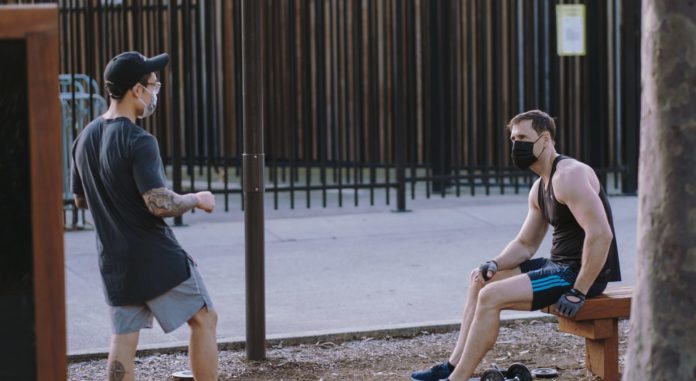Do you also get irritated by people on the street who you think should give you right-of-way, but don’t, in these times of 1.5-meter way of life?
Here in the Netherlands, we are free to go outside provided we apply the social distancing rule of one-and-a-half meters between people. We are now living in what they call the anderhalvemetersamenleving (1.5 meter/5-foot society), a word that no doubt is a good candidate for the Word of the Year 2020 contest! Incidentally, it’s interesting to note that this social distancing varies from country to country: from 1m in Sri Lanka, to 1.5m in the Netherlands and up to 2m in Ireland or the US, just to name a few.
So let me describe what I’ve experienced on the streets while walking or running in my neighbourhood recently. Applying the current social distancing rule means you cannot cross or pass people in what used to be a normal way (do you still remember that, about four months ago?). On narrow sidewalks or running paths, this can become quite a challenge.
You indeed see that other person (a.k.a. the enemy) approaching and after a quick observation round often combined with an instant non-verbal negotiation, something happens: either you or they stay on track or deviate. This is a human interaction (still exists outside) involving politeness, social hierarchy and etiquette. And depending on the situation, it brings all kinds of emotions: pleasure with (reciprocal) eye-contact, smile and even a greeting, neutral look with little further feedback, or irritation involving totally ignoring that enemy crossing your path.
There are written and unwritten rules in this social process. Let me explain: I’m in a sense part of the old guard, turning slightly grey, so I expect some respect and right-of-way from the younger generations as much as I’d do myself for older folks. But in the egalitarian Netherlands, this is not often the case.
Who moves out first in the street very much depends on situational circumstances: the one holding position can be the bigger person (obesities can be an advantage), the boldest (read most impolite), the less mobile (pretend you’ve just hurt your leg), or the group (the law of numbers).
Worst are the neighbours or friends whom you unexpectedly meet on the street or running path and decide to have a chat (live version, mind you!) and thus block your passage by standing slightly aside. Second, worst are the (motor)cyclists who just behave the way they used to previously in normal times by crossing or passing you at a small distance (definitely not 1.5m). Next to these interpersonal aspects, there are cultural factors as well.
In theory, it’s called proxemics, a term coined by the US American anthropologist E.T. Hall. In short, it’s about the use of interpersonal space in relation to nonverbal communication and it’s influenced by culture (and personality). Roughly speaking, there are four distinct areas: intimate, personal, social and public spaces.
The first one doesn’t affect new outdoors behaviour as it’s mainly restricted to homes and the latter applies to large spaces not relevant here, but the two others are set to evolve in this new post-Corona era because they regulate social distancing between 1 or 2 meters and related nonverbal habits.
What about the hand-shake for example? According to a recent BBC-article it may well just disappear from our daily life rituals because of public health reasons. Some people traditionally use it a lot (the French, for example) and others a bit (the Dutch) or not at all (the Japanese). Studies show that social distancing will be maintained in the new normal that we need to create together in the near future. This has huge implications for all socio-economic and cultural areas. We may need to reset the default kissing, hand-shaking or hugging to a new mode in our personal and social spaces. But let’s make sure we invent new communication ways combining social distancing with distant socialising in our new reality! Any suggestions?

Guest writer: Vincent Merk, Senior Lecturer in Intercultural Management &Community advisor at Eindhoven University of Technology TU/e.











